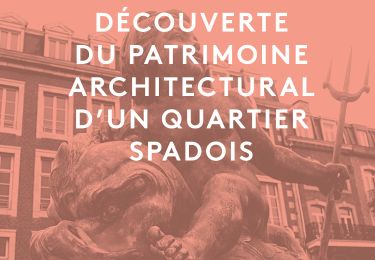

The parish church of Notre-Dame and Saint-Remacle is a vast stone building, built between 1883 and 1886.
A church is almost always orientated, i.e. the chancel faces east. This is not the case here. The current building was built on the site of an earlier church, which was oriented.
Question 5. This church was the setting for the funeral of Queen Marie-Henriette, whose portrait we have just seen above the monumental fountain. What year was this?
As its name suggests, a bell tower is designed to hold bells. The sound of the bells is directed towards the pavement by means of sound shades, horizontal slats inserted obliquely into the bays (openings) of the bell tower. The bell tower is topped by a spire, a very high roof with sloping sides.
Question 6: How many sides do the two spires of the bell towers have?
Now look at all the facades of the houses in the square, on the right-hand side as you go up, and look for the smallest one as you head towards the rue du Waux-Hall.
Question 7. What is the number of this smallest facade? How wide is it? Around 2.75 metres, 2.50 metres or less than 1.80 metres?
This church, built in limestone to the designs of Beloeil architect Eugène Carpentier, is in the neo-Mosan-Rhenish style. Inside, the neo-Romanesque furnishings were designed by C. Sonneville and partly created by Antwerp sculptor Pierre Peeters in the late 19th century.
The square's smallest façade has a single bay, i.e. a single vertical slice of superimposed openings. The level, or storey, corresponds to a horizontal slice of aligned openings.
The building shown in the attachment has 2 levels and 3 bays.
ANSWERS
5. Queen Marie-Henriette's funeral took place on 22 September 1902.
6. The 2 spires of the church have 2 X 8 sides = 16 sides.
7. The smallest façade is number 19 and measures less than 1.80 metres.

Walking


Randonnées de la Maison du Tourisme de Spa Hautes-Fagnes Ardennes PRO